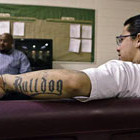
Foundation Strives to Create Legacy for Juvenile Justice Reform
|
WASHINGTON, D.C. – The nonprofit MacArthur Foundation has spent more than $100 million since 2004 on developing blueprints for reform within the juvenile justice systems of 16 states. Earlier this week, its reform initiative, Models for Change, brought together nearly 400 judges, advocates, probation officers and other juvenile justice professionals for two days of workshops in Washington, D.C.
It was the seventh such yearly gathering for Models for Change partners, and it came at a time when the foundation is beginning to wind down funding for new research into juvenile justice reforms and enter a new phase focused on defining, sustaining and disseminating to the rest of the country the reform models its state partners and networks have already developed. As the foundation moves toward solidifying the legacy of its blueprint initiative, its conference this year emphasized the power of storytelling and collaboration as a way to convey the impact of justice reforms to other states and to the public. The storytelling theme ran through several events over the two-day event. Public relations professionals held a plenary session to discuss how juvenile justice organizations could craft an effective public message.

